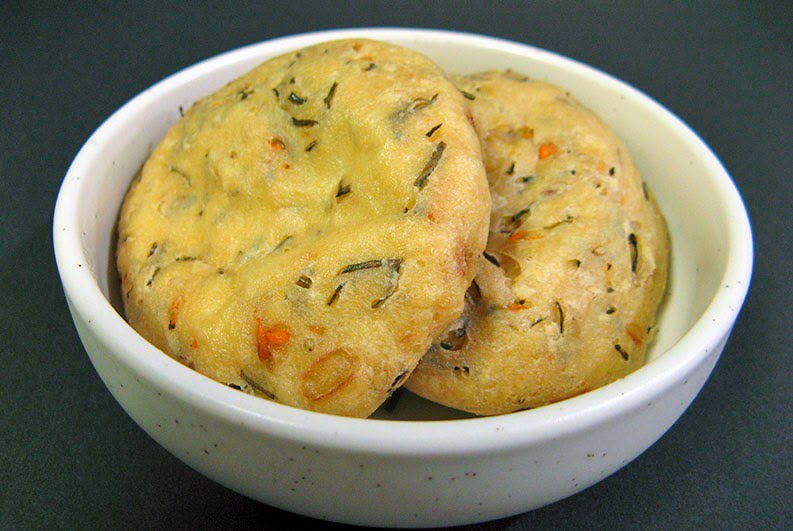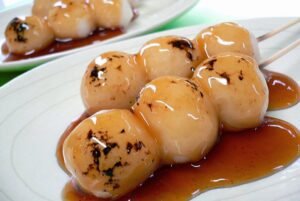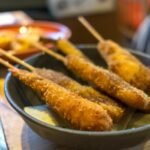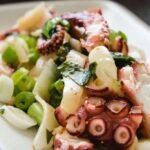Welcome to the world of hiryouzu ganmodoki, a delectable dish that encapsulates the essence of traditional Japanese cuisine. In this article, we will embark on a culinary journey to unravel the secrets of this mouthwatering delight.
From its origin to the preparation techniques, we will delve deep into the rich cultural heritage associated with hiryouzu ganmodoki. So, let’s dive in and explore the intricate flavours, ingredients, and captivating history of this remarkable dish.
Hiryouzu Ganmodoki: An Overview
Hiryouzu ganmodoki, also known as “hiryouzu tofu fritters,” is a popular dish originating from the Japanese culinary tradition. It is a type of fried tofu fritter that is meticulously crafted with a blend of various ingredients, resulting in a harmonious combination of flavours and textures. The dish is renowned for its crispiness on the outside while remaining soft and succulent on the inside.
The Origin of Hiryouzu Ganmodoki
Hiryouzu ganmodoki traces its roots back to the Edo period of Japan, which spanned from the 17th to the 19th century. During this time, Buddhist vegetarian cuisine, known as shojin ryori, gained prominence. Hiryouzu ganmodoki was one of the dishes created as part of this culinary movement, emphasizing the use of plant-based ingredients. The dish was particularly favoured by Buddhist monks as a vital source of protein in their diet.
The Ingredients that Define Hiryouzu Ganmodoki
- Tofu: The key component of hiryouzu ganmodoki is tofu, a versatile and nutritious soybean-based product. The tofu used in this dish is typically firm or extra-firm to ensure it holds its shape during frying.
- Vegetables: Various vegetables such as carrots, mushrooms, and green onions are finely chopped and incorporated into the tofu mixture. These vegetables add flavours, textures, and colours to the patties.
- Seasonings: Traditional Japanese seasonings like soy sauce, mirin (sweet rice wine), and dashi (fish or seaweed stock) infuse the tofu mixture with savoury umami flavours.
- Starch: Starch, often potato starch or cornstarch, is added to the mixture to bind the ingredients together and create a crispy exterior when fried.
The Art of Preparing Hiryouzu Ganmodoki
- Step 1: Drain the tofu and remove excess moisture by placing it between layers of paper towels or using a tofu press. This ensures the tofu has a firmer texture.
- Step 2: Finely chop the vegetables, ensuring they are uniformly sized. This helps in creating a well-balanced and visually appealing dish.
- Step 3: In a mixing bowl, combine the tofu, vegetables, seasonings, and starch. Gently mix the ingredients until well-incorporated, being careful not to break the tofu.
- Step 4: Shape the mixture into small patties or balls, ensuring they are compact and hold their form. This can be done by using your hands or a shaping tool.
- Step 5: Heat oil in a frying pan or deep fryer. Carefully place the hiryouzu ganmodoki into the hot oil and fry until golden brown and crispy on all sides.
- Step 6: Once cooked, remove the fritters from the oil and place them on a paper towel-lined plate to absorb excess oil.
FAQs about Hiryouzu Ganmodoki
Hiryouzu, in the context of hiryouzu ganmodoki, refers to the absence of certain ingredients such as meat, fish, and dairy. It signifies the dish’s adherence to the principles of shojin ryori, a form of Buddhist vegetarian cuisine.
Yes, hiryouzu ganmodoki can be made gluten-free by using gluten-free soy sauce and ensuring that the starch used is also gluten-free, such as potato starch or cornstarch.
Absolutely! Hiryouzu ganmodoki is versatile and can be enjoyed as a standalone dish, paired with a dipping sauce, or incorporated into other recipes such as soups, stews, and stir-fries.
While the basic preparation of hiryouzu ganmodoki remains consistent, there may be slight regional variations in terms of seasonings and vegetable combinations. These variations add a unique touch to the dish, reflecting the local culinary traditions.
Yes, hiryouzu ganmodoki is a plant-based dish that is suitable for vegans and vegetarians. It is a wonderful option for individuals looking to explore the diverse range of flavours offered by Japanese cuisine.
Yes, hiryouzu ganmodoki can be prepared in advance and reheated. However, for the best texture and flavour, it is recommended to reheat the fritters in an oven or toaster oven to maintain their crispiness.
Conclusion
Hiryouzu ganmodoki stands as a testament to the culinary finesse of traditional Japanese cuisine. Its delicate blend of flavours, meticulous preparation, and rich cultural significance make it a beloved dish among locals and visitors alike. Whether enjoyed on its own or as part of a larger meal, hiryouzu ganmodoki is a delightful culinary experience that showcases the beauty and depth of Japanese gastronomy.
So why not immerse yourself in the world of hiryouzu ganmodoki and savour the taste of Japan’s culinary heritage?





























